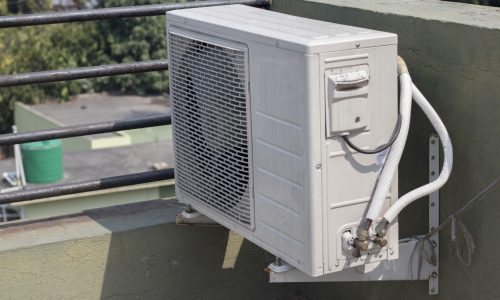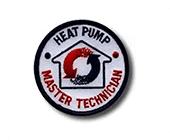You’d be surprised by how many homeowners do not know if their homes are heated by a heat pump or by a conventional heating system. These homeowners could be under the impression that a heat pump and a conventional heating system are one and the same, since heat pumps and conventional heating systems look almost identical on the outside, which makes it difficult to tell apart by simply taking a quick glance.
However, if you know what to look for, there are certain differences between the two that may be found that can help you tell them apart. Let’s take a look at these distinctions between the two and answer a common question: How do I know if I have a heat pump or a conventional system? We will also learn how Autumn Air can serve as a single touchpoint for all of your heating needs.
What is a heat pump vs conventional heating system?

Heat pumps and traditional heating and cooling systems both accomplish the same goal, which is to heat or cool your house by transferring heat inside and outside the building. Due to their similarities, identifying whether an individual has a heat pump or a traditional system can be challenging.
The primary difference between heat pumps and conventional HVAC systems is in how they generate heat. The heating process of a heat pump is the exact opposite of the cooling process, and it works by transferring heat from the outside air to the inside space of a building.
Both boilers and furnaces make heat by burning fuel, but the process is different for each. The ability of heat pumps to operate both as a heating and cooling system is a benefit that is valued by many homes.
More on conventional vs heat pump heating systems
Both furnaces and heat pumps that are centrally located are examples of forced-air heating systems. In order to keep your house warm, the air that has been heated by transferring the warmth from the heat pump is circulated via the duct system in your home. The combustion mechanism of the furnace warms the air, and then that air travels via the duct system to get to the living sections of the house.
Radiant heat is released from radiators after water has been heated by boilers, which is then pumped throughout the house. Components of the heating system, such as the furnace and the boiler, are located within the home, while heat pumps comprise both indoor and outdoor parts.
A furnace is a solid metal chamber that may be set up in either a vertical or horizontal orientation. Inside boilers are located two distinct components: a furnace and a tank that is used to store heated water.
The outside component of a heat pump system is the actual heat pump itself, which is most similar to a conventional system in appearance. This kind of system is known as a “split system” because half of the equipment is located within the building and the other half is located outside. Heat is transferred from the heat pump to the air handler, which is located inside the building.
How do I know if I have a heat pump system or a conventional heating system?
Homeowners approach us with loads of questions, one of them being, “How do I know if I have a heat pump system?” There are four ways to find out if the HVAC system in your home is a heat pump or a regular heating system.
1. Look for ER, EMER, or EMERGENCY setting on your thermostat
As was said earlier, the thermostat provides you with a great deal of information on the heating system in your house.
Check the thermostat and examine it to see if it has an “ER,” “EMER,” or “EMERGENCY” button or mode. You would use this mode if the heat pump stopped working and couldn’t give off the right amount of heat.
When the primary heat source fails, the HVAC system will transition to a backup heat source, which is often the furnace.
The emergency mode is exclusive to heat pumps; traditional systems do not have it. Therefore, the presence of this mode is conclusive evidence that you do not have a conventional heating system but rather a heat pump.
2. Ensure that the outside unit is set to the heat mode
The second thing you may do is check the exterior unit when the “Heat” setting is on on the thermostat. In the event that it is operational, you have a heat pump. If it isn’t, then you’re probably just using a regular system.
In order to produce warm air, a heat pump makes use of the component that is located outside the building. The exterior unit is not used by other types of heating systems, such as the furnace. As a result of that, a conventional system will not have an outside unit to engage with in order to produce heat.
If you can hear the device running after switching to the heat mode, it is likely a heat pump and not a regular heating system.
3. Labels are important
You can learn a lot about the product by reading the labels, which include a lot of information. The side panels of the outdoor air conditioning unit have identical labeling. You need to investigate it in order to establish whether or not you have a conventional air heating unit or a heat pump.
On the label of certain models, it will state quite clearly that the appliance is equipped with a heat pump. You can also look for the prefix “HP” followed by a serial number. Take this number and do a search on Google with it. Add the product’s brand name for even more specificity. The findings would indicate that what we have is a heat pump.
You might also want to check the yellow EnergyGuide sticker that is affixed to the exterior unit. The majority of items sold in stores are required to have it affixed by the OEMs.
If your product label offers ratings for both the Heating Seasonal Performance Factor (HSPF) and the Seasonal Energy Efficiency Ratio (SEER), in such a case, it’s a heat pump. Heat pumps have two ratings because they can be used to both heat and cool the home; the SEER rating is for the cooling capacity, while the HSPF rating is for the heating capacity.
4. A reversing valve is tell-tale sign
If there is a brass valve attached to your exterior unit, you probably have a heat pump.
The reversing valve is the component of the heat pump that is responsible for enabling the system to perform the functions of both a cooler and a heater. Within the system, the flow of the refrigerant can be altered by the valve. On the other hand, traditional systems do not have this valve since they do not need it.
To find it: After switching off the system, wait for the fan that is located inside the exterior unit to finish rotating. Then, using a flashlight, look inside through the opening at the top. If you are able to identify a twisted item that looks like brass, that’s the valve we are looking for.
Prompt maintenance is the key to maximum savings
The upkeep of a working HVAC system requires regular attention and service. With the help of an experienced HVAC professional like Autumn Air, it’s easier to keep your system in great shape all winter long.
You can directly call (602) 266-5247 or schedule the service here.













